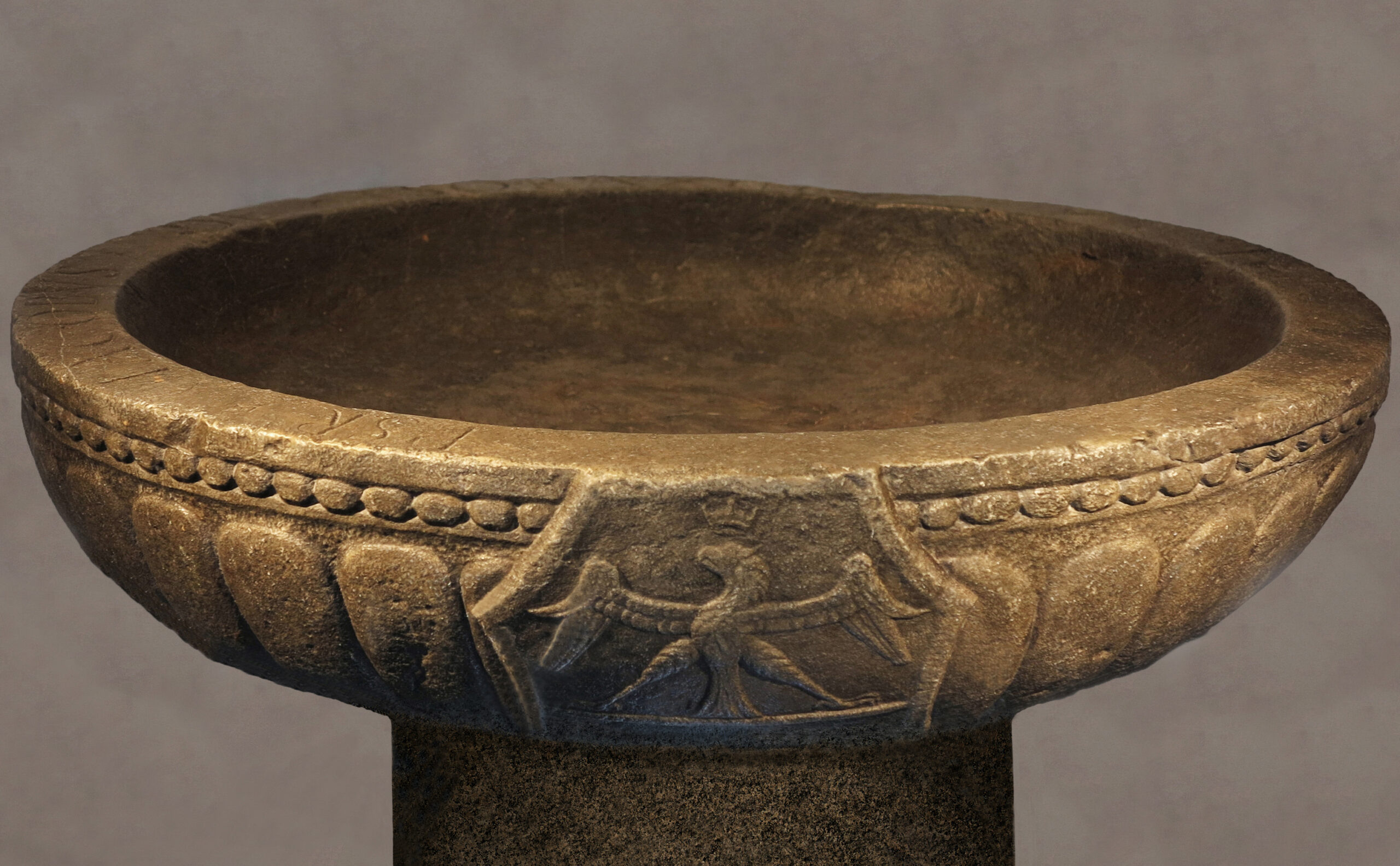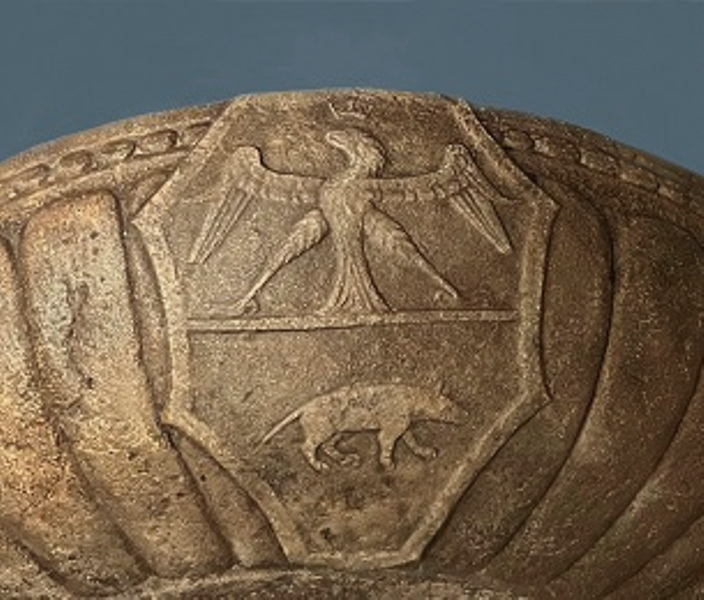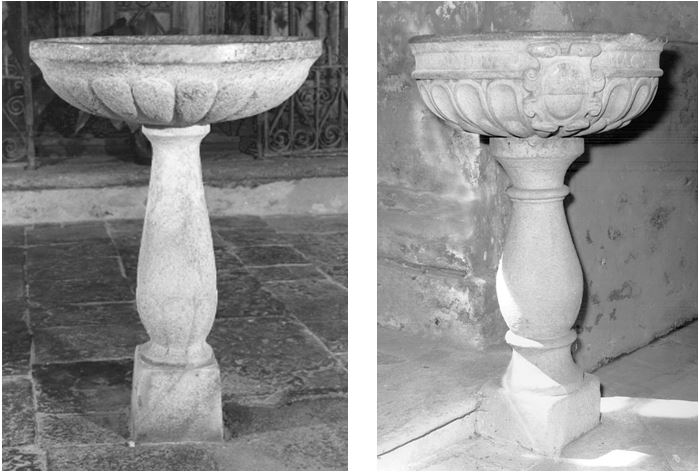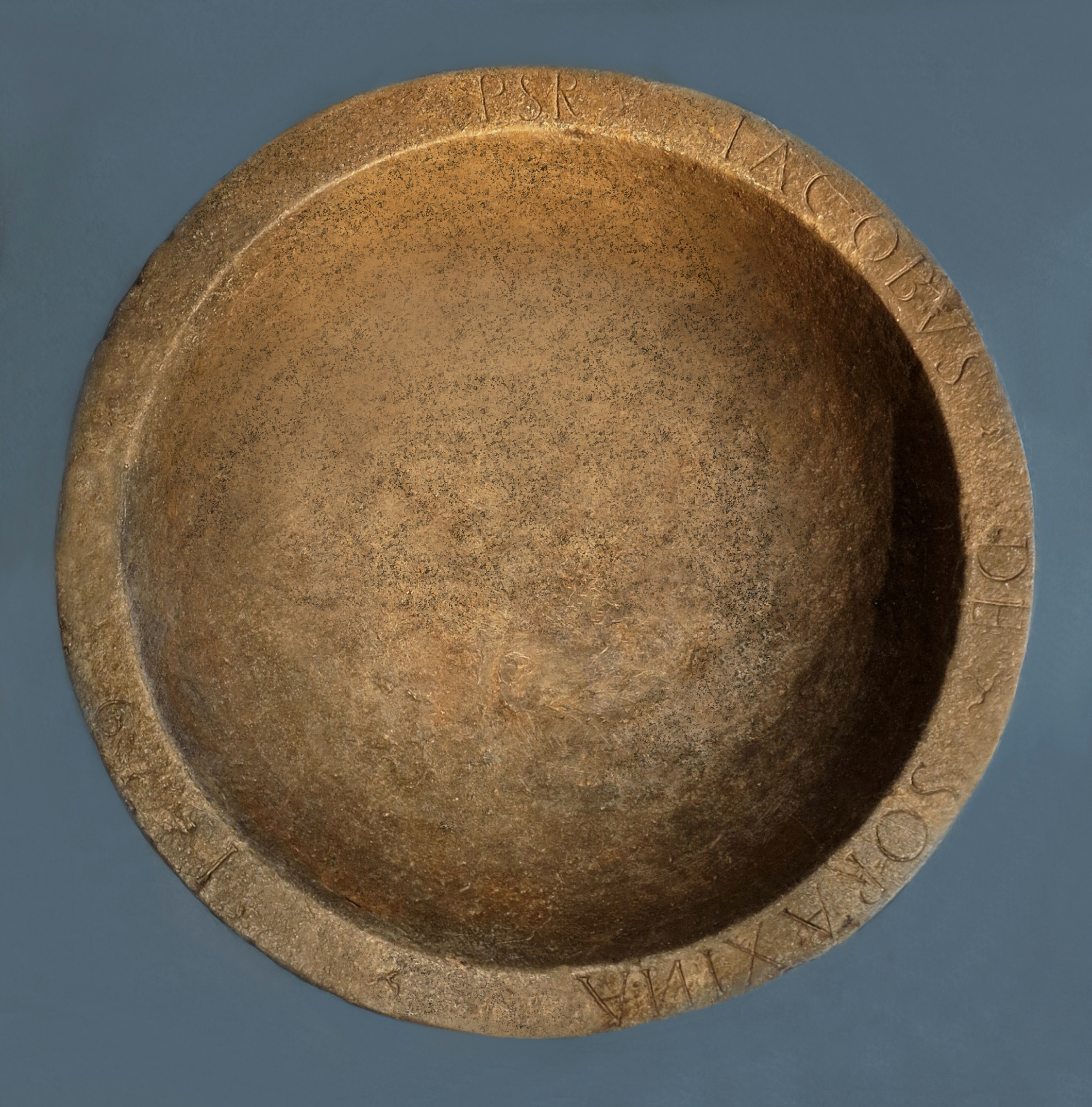
A Noble Holy Water Basin
Holy Water basins began to appear at the entrances of Christian churches between the 8th and 9th centuries. They were small and shallow containers, designed to hold blessed water with which believers, dipping the fingers of one hand into it, made the sign of the cross as a gesture of purification and a reminder of the sacrament of Baptism.
The charming and unpublished basin here examined is in the typical form of a circular grey stone basin, with a classical decoration with lobes and ovules covering the outer surface of the vessel. On the flat upper rim of the basin is engraved in capital letters the following inscription: ‘PSR IACOBVS DE SORAXINA 1519’ or ‘Presbitero Giacomo da Soresina 1519’. On the outside of the basin is a full-height coat of arms, depicting a small mouse placed under a crowned imperial eagle, which is precisely the heraldic symbol of the Soresina family (the mouse in the family emblem is a so-called canting arms since in Latin the word sorex, soricis means ‘little field mouse’).

The presbyter Giacomo is undoubtedly the commissioner and donor of the work, as he certainly was a wealthy descendant of the ancient Soresina family, considered by the famous 14th-century chronicler Galvano Fiamma as the most noble and important Milanese familes of Lords and commanders of the 12th and 13th centuries.
As has been repeatedly stated, the Soresinas entered the power dynamics of the newly-born municipality of Milan right from the start, having privileged access to the consular magistracies due to their familiarity with the law and their belonging to the professional categories of jurists, which were certainly at the origin of their social prestige; at the same time they also occupied dominant roles in the religious sphere – so much so that they were among the few and exclusive families from which both the Archbishop and the canons of the Major Chapter of Milan Cathedral could come – and established prestigious feudal ties with important institutions such as the Monastery of Sant’Ambrogio.

Like all aristocratic families, the Soresinas also owned altars, chapels and private churches, and our Holy Water basin was certainly located in one of them.

Renaissance Holy Water fonts similar to ours, i.e. characterised by a lobed decoration on the outside of the basin, are well known, documented and widespread throughout Italy, and particularly in Lombardy. Among the different examples found, we can mention the basin in the church of Consiglio di Rumo (Como) and the one in the church of Mede (Pavia), which also bears the coat of arms of its donor.

HOLY WATER BASIN
Carved stone
Italy (Lombardy)
1519
Diameter cm 57; h. cm 13
© 2013 – 2024 cesatiecesati.com | Please do not reproduce without our expressed written consent
Alessandro Cesati, Via San Giovanni sul Muro, 3 – 20121 Milano – P.IVA: IT06833070151